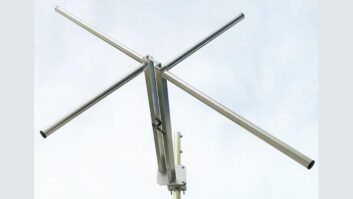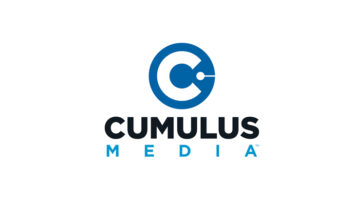An increasing number of consumers are using mobile Internet radio to tune into radio streams delivered in IP packets to mobile devices — for example, the iPhone — over wireless networks (EDGE, 3G, WiFi, etc). The listening experience often happens on the move with headphones, or in the car with the phone connected to the integrated stereo unit.
Now, thanks to a major audio technology implementation from Fraunhofer IIS, a rewarding new phase of development for mobile Internet radio is in prospect.
The age of mobile Internet radio has well and truly arrived. Accustream imedia research reported an increase in listening hours for music radio online to 4.85 billion in 2007, up 26.1 percent over 2006. An even more dramatic increase can be expected for 2008 and 2009.
The same study shows advertising-related revenue estimated at $80 million for calendar year 2007, up by 194 percent over 2006.
(click thumbnail)
Evolution of MPEG Audio Codecs over time Often listened to on foot or in the car, the new-generation radio services — delivered via the iPhone and other portable devices — offer equivalent or even superior quality to conventional digital radio services, and allow broadcasters and their partners to reach substantial audiences that traverse demographics.
Consumers can conveniently enjoy an almost unlimited number of programs anywhere — worldwide. The wide content spectrum encompasses local stations, music-only formats, and news and talk radio. ITunes tagging and similar services enable consumers to instantly purchase the music, played on the radio, in numerous download stores.
As Radio World recently reported, Internet radio apps now represents eight of the top 20 applications on Apple’s App Store, and there is an extremely good chance that this figure will increase even further during the next few years as exciting new services come on-stream.
In short, this is a trend that shows no signs of peaking despite inevitable competition from other methods of delivery such as MP3 players and traditional analog radio.
However, as a variety of stakeholders — broadcasters, operators, service providers and end users — will know all too well, the emergence of Internet mobile radio has not been unencumbered by difficulties.
In particular, the high-bandwidth requirements of the first generation of services have had negative implications for the stability and audio quality of the listening experience. For a consumer base increasingly used to the reliability and high quality of conventional digital audio, this has without doubt been a source of unhappiness.
The situation has been particularly acute for those users who access Internet mobile radio from their cars. High-end in-car audio is taken for granted these days — and rightly so when the automotive systems can rival their domestic equivalents in terms of quality and specification. Once again, however, the end-user experience has sometimes fallen short of expectations.
The need to resolve these problems is becoming more urgent as ever-greater numbers of broadcasters and service providers enter the fold. The ability to operate services that don’t require a broadcast license or special receiver hardware and work independently of region is likely to prove particularly attractive to those broadcasters struggling to survive in an era of reduced advertising revenue. The service costs involved with Internet radio are, among other factors, determined by the number of uni-cast streams and the required bitrate.
Minimizing bandwidth requirements, reducing operating costs per listener and boosting audio quality are vital if Internet mobile radio is to realize its full potential. It is precisely these issues that R&D and software house Fraunhofer IIS — whose numerous audio credits include the development of MP3 and the co-development of AAC — has sought to address with one of its latest innovations: the MPEG-4 High Efficiency Advanced Audio Codec (HE-AACv2), aka eAAC+.


Low bitrate, high quality
Enhanced service stability and a more satisfying listening experience are among the cited benefits of deploying the HE-AACv2 codec.
An increasingly popular choice for mobile multimedia applications including Internet radio, HE-AACv2 is part of a large family of audio technologies available for the Fraunhofer iPhone Software Development Kit (SDK) that also includes MP3 and AAC encoders/decoders, as well as MPEG Surround binaural decoders for surround Internet radio on the move or in the rear seat of a car.
Foremost among the advantages of the HE-AACv2 codec is a reduction of the required bitrate that can be as high as 25 percent for entertainment-grade quality, and 50 percent for near-CD quality, compared to legacy codecs.
This results in an overall bitrate requirement of 32 kilobits per second for stereo signals. The technology also enables increased stability and quality of service, and allows the elimination of dropouts and extended buffering. In addition, the codec clears the way for the operation of more individual streams or stations over the same bandwidth.
Cognizant of the growing pressure to facilitate high-quality, efficient mobile applications, Fraunhofer recently announced that it was enabling licensees such as radio stations, service providers and media player developers to implement optimized SDK HE-AACv2 decoder libraries on the iPhone OS and other mobile platforms. Encoders and a versatile set of streaming tools are also available.
Forward to the future
If HE-AACv2, the international MPEG standard, is not yet a household name, it soon will be. The codec has already been deployed in embedded devices used for radio, TV and music download applications. Among other high-profile credits, the codec has been specified for 3GPP music download and streaming applications and mobile TV standards including DVB-H, DMB Europe and ATSC-M.
Other major applications are in the pipeline, and Mobilaria’s “Tunin.FM” as well as broadcast engineering services provider Modulation Index are already using the Fraunhofer HE-AACv2 extensively in their iPhone Internet radio applications.
“We have been working to make radio stations sound great for over 25 years,” said Greg Ogonowski, president of Modulation Index and co-developer of the Orban Optimod audio processors.
“Most iPhone applications are satisfied to make your station sound poor, even those that claim HE-AAC support. Our custom iPhone player has gone the extra miles to reliably supply the highest quality audio, directory services and integrated PAD to your mobile listeners. We combine the Fraunhofer HE-AACv2 decoder, Tuner2.com directory services and standards-based RTP transport to give your listeners the best possible experience. You are loud and proud on the air, and we get you there on the iPhone as well.”
Few would contradict the observation that mobile Internet radio has a long way to go until it realizes its full potential. Many mobile users have yet to wake up to these new generation services, perhaps having only recently adjusted to the world of conventional digital radio. In addition to audio services, more and more video streams will be delivered over wireless networks in the future, which will increase the bandwidth constraints even further.
The straightforward combination of HE-AACv2 audio and the H.264 video codec will address these issues in the near-term; however, only the deployment of 4G networks over the next few years will allow a mass-market penetration in the long run.
Surrounded by sound
For those broadcasters and service providers prepared to go “the extra mile,” there is also the opportunity to implement surround Internet radio. Once again, Fraunhofer IIS offers audio codecs that enable these services.
Principle among these are MP3 Surround and MPEG Surround. The use of these codecs enables radio stations to stream true 5.1 surround sound at bitrates as low as 48 kbps. Additionally, these services are backwards compatible to stereo devices, ensuring that listeners yet to upgrade to the latest surround systems are not excluded from the party. The codecs’ ability to render surround sound virtually on common stereo headphones allows consumers to enjoy a multi-channel audio experience on their iPhones or other mobile devices — wherever they may be.
Mobile Internet radio — surround or otherwise — constitutes a new technological world, and any trepidation felt by broadcasters and their partners at its arrival is entirely understandable.
However, no one needs to draw a cut-and-dried scenario of the versatile ways of bringing radio to listeners. Most traditional radio broadcasters will offer Internet radio services as a supplement to their existing broadcasts. Exciting new opportunities await; and thanks to developments by companies including Fraunhofer IIS, the technology to realize them is now in place.
The author is director of marketing & business development in the Audio & Multimedia Division of Fraunhofer USA Digital Media Technologies. Contact the author at[email protected]. Comment on this or any article. Write to[email protected].







